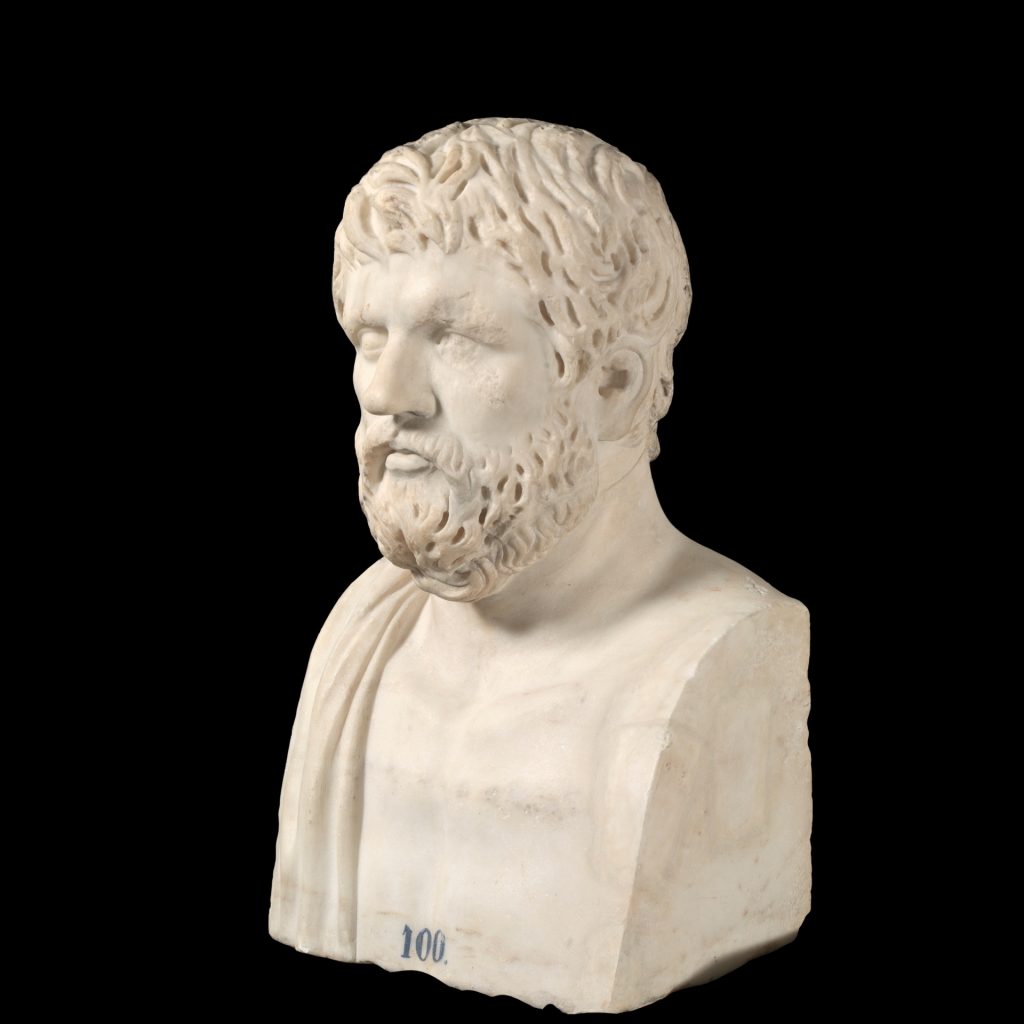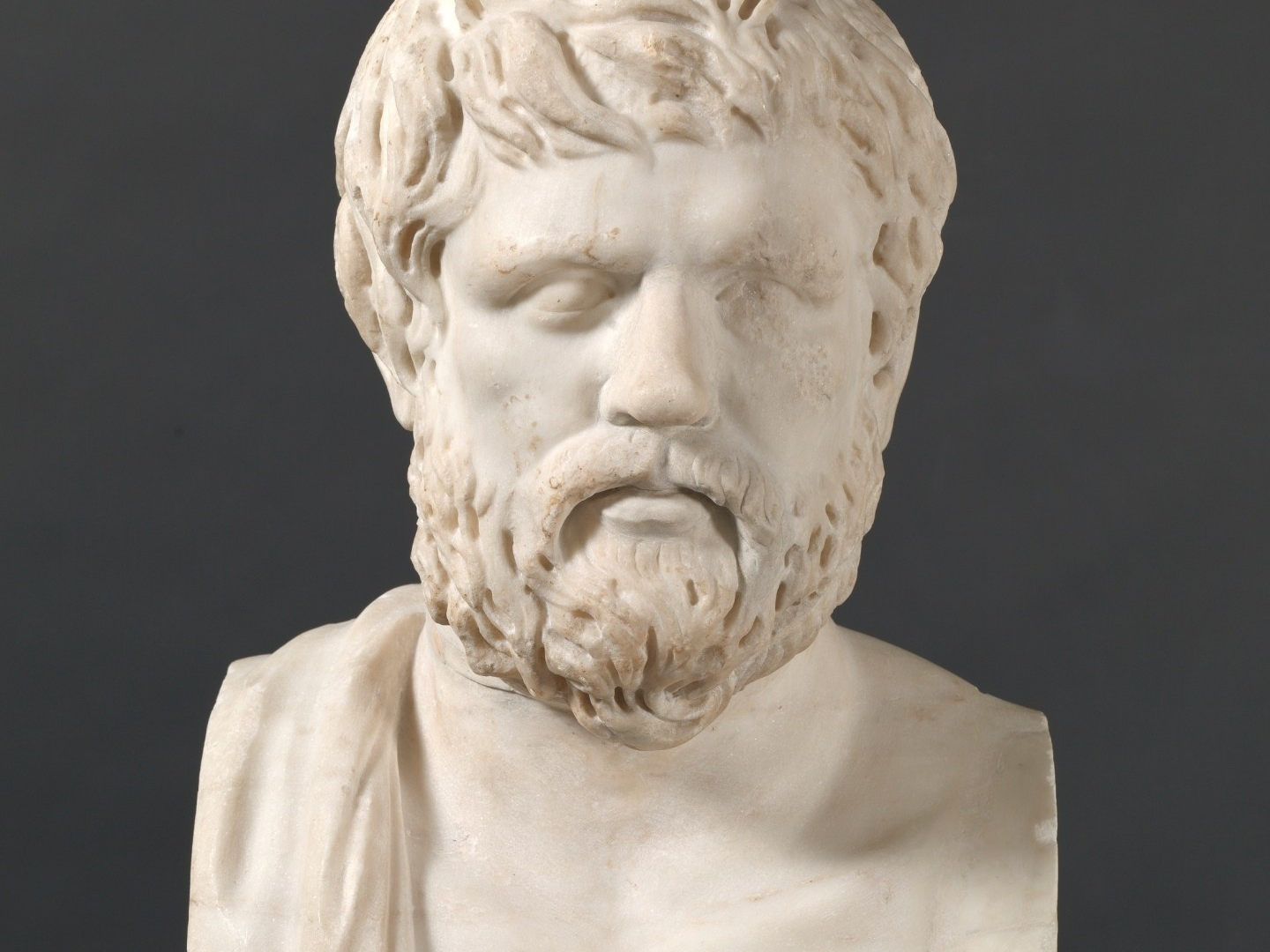The works of Xenophon are prominent in “A Problem in Greek Ethics,” which is surprising given his complete absence from the Memoirs of John Addington Symonds. In addition to providing vital evidence within what is arguably now Symonds’ most iconic contribution to queer scholarship, Xenophon also seems to function as a kind of vehicle for the articulation of same-sex desire between Symonds and his friend Henry Graham Dakyns.
Xenophon was a soldier, historian, and philosopher who lived from 431-354 BC. A student of Socrates, one of his best-known works is Memorabilia, which contained conversations with Socrates. His other notable works include the Anabasis, and Symposium and Apology also depict Socrates. He was famously part of the march of the Ten Thousand to take Persia. Although he was from Athens, he also wrote on and took great interest in Sparta.

Symonds primarily uses Xenophon to sketch out more specific details of paiderastia, or the Greek tradition of a socially acceptable romantic relationship between a younger boy and an adult man. He selects specific examples to argue that paiderastia is a genuine and passionate arrangement, and to reinforce its cultural permissibility by highlighting instances of same-sex relations that are unseemly.
The first notable reference to Xenophon appears in Section 7 of the essay. Symonds relays an anecdote from Anabasis, which is lengthy military history, explaining, “The following anecdote from the Anabasis of Xenophon may serve to illustrate the theory that regiments should consist entirely of lovers.”1 He goes on to relay how Episthenes of Olynthus saved a gorgeous boy from being killed by Seuthes II’s army. In his justification for saving the boy, in violation of a direct order, Episthenes tells Seuthes that he once formed an entire army of beautiful men.
The inclusion of this excerpt is specifically notable for its passion. Symonds includes both the Greek text and English translation of the following line: “Then Seuthes asked Episthenes if he was willing to die instead of the boy, and he answered, stretching out his neck, “Strike,” he says, “if the boy says yes, and will be pleased with it.”2 Here, Symonds makes the case that if the love between Episthenes and the boy is so strong (as strong as a heterosexual love), it should be permitted. This reading is validated by the fact it is reason enough for Seuthes—he grants the boy freedom, and Episthenes and the boy leave together.
Xenophon appears again in Section 10: Symonds cites Agesilaus, which biographies King Agesilaus II. Xenophon explains that paiderastia was not only sanctioned, but a part of Spartan education, since boys left home early for training and family influence was minimal. Throughout his essay, Symonds uses, alternatingly, sociohistorical accounts and specific illustrative examples, and Xenophon is particularly salient for his provision of both.
In terms of the latter, Symonds draws on Xenophon’s Symposium extensively in Section 13, using direct excerpts to elucidate the ideals of the boy lover. Symonds recounts a passage where Autolycus is invited to a banquet by his lover, Callias. When Autolycus is presented, “kind of divine awe fell upon the company…The grown-up men were dazzled by the beauty and the modest bearing of the boy.”3 The passage continues on, waxing poetic about Autolycus’s features. Symonds then gives a second example of passionate attraction in Symposium: Critobulus accounting his feelings for Cleinias. “I would rather be the slave of Cleinus,” Critobulus says, “than live without him; I would rather toil and suffer danger for his sake than live alone at ease and in safety. I would go through fire with him, as you would with me.”4
In the very next section, Xenophon’s Memorabilia is used to provide additional historical context. Symonds explains that there were morally distinct categories of pederasts, recounted by Xenophon as well as other writers such as Aristophanes, who said in Plutus, there were χρηστοὶ, “the good,” and πόρνοι “the strumpets.” Symonds then cites in a footnote Xenophon’s exact definition : “τήν τε γὰρ ὥραν ἐὰν μέν τις ἀργυρίου πωλῇ τῷ βουλομένῳ.”5 In English: “For to offer one’s beauty for money to all comers is called prostitution.”6
Symonds illustrates this difference with an example from Anabasis, where Xenophon describes at length how Strategus Menon was morally bankrupt for having achieved the rank of general by sleeping his way up the ranks with Aristippus and Ariaeus (the latter a barbarian). Xenophon describes a number of unproblematic relationships; he makes clear that the issue is not with those relations themselves. Xenophon describes Strategus Menon unfavorably because he “debases virtuous qualities” and “pursued selfish and mean aims” by having sexual relations for money.7 In other words, what should be a pure and passionate relationship is sullied by Strategus Menon’s use of sex as currency.
As mentioned before, despite his extensive usefulness in “Greek Ethics,” Xenophon does not appear at all in the pages of Symonds’ Memoirs. For this reason, it is difficult to determine exactly when he first encountered Xenophon. The only references to Xenophon are in Symonds’ letters to his close friend Henry Graham Dakyns. Dakyns was a good friend of Symonds—they met at Clifton College in Spring of 1864.8 His primary project was translating the complete works of Xenophon, which he would eventually finish in 1883.
Like Symonds, Dakyns had an interest in men, although it does not come up in his scholarly work. All of the Xenophon references in Symonds’ letters are very broad, and in reference to Dakyns’ work. Symonds often asked him to send translations or essays and encouraged him to finish his projects, saying once: “I am burning to see Xenophon either in proof or in mature print.”9 Paiderastia also came up occasionally in their letters, although the only one which mentions both Xenophon and Greek love came towards the end of Symonds’ life. However, discussed Symonds’ Greek love project in other letters. Dakyns’ side of the correspondence has not survived as well as Symonds, but it seems probable that Dakyns had to some extent furnished Symonds’ knowledge of specific examples of paiderastia in Xenophon’s works.
Ultimately, Xenophon was a fruitful source for Symonds in terms of examples of socially acceptable, and sometimes expected, same-sex relations in ancient Greece. Symonds drew on four separate Xenophon texts, scattered throughout the essay; Xenophon’s status as a historian-philosopher, rather than a classical poet or playwright, positions him as a vital source for Symonds in the sense that his writings remove the level of extrapolation required in drawing social and cultural conclusions from literary sources.
Footnotes
1 John Addington Symonds and Sean Brady, ed. “A Problem in Greek Ethics,” John Addington Symonds (1840-1893) and Homosexuality: a Critical Edition of Sources, (London: Palgrave Macmillan, 2012), 51.
2 Symonds and Brady, “Greek Ethics”, 52.
3 Ibid, 81.
4 Ibid, 82.
5 Xenophon. Xenophon in Seven Volumes. E. C. Marchant, trans. (Cambridge: Harvard University Press, Cambridge, 1923), 1.6.13.
6 Symonds and Brady, “Greek Ethics,” 87
7 Ibid, 88.
8 John Addington Symonds and Amber K. Regis, ed. The Memoirs of John Addington Symonds: a Critical Edition, (London: Palgrave Macmillan, 2016), 240.
9 John Addington Symonds and Horatio F. Brown. Letters and Papers of John Addington Symonds, (New York: C. Scribner’s Sons, 1923), 1160.
Works Cited
Booth, Howard J. “Same-Sex Desire, Ethics and Double-Mindedness: The Correspondence of Henry Graham Dakyns, Henry Sidgwick and John Addington Symonds.” Journal of European Studies 32, no. 125–126 (September 2002): 283–301. doi:10.1177/004724410203212514.
Browing, Eve A. “Xenophon (430—354 B.C.E.),” Internet Encyclopedia of Philosophy, accessed March 6, 2019. https://www.iep.utm.edu/xenophon/.
Collection: Henry Graham Dakyns Papers | Archives at Yale. Accessed March 7, 2019. https://archives.yale.edu/repositories/11/resources/812.
Symonds, John Addington. “A Problem in Greek Ethics,” essay, in John Addington Symonds (1840-1893) and Homosexuality: a Critical Edition of Sources. Edited by Sean Brady. London: Palgrave Macmillan.
Symonds, John Addington. 1923. Letters and Papers of John Addington Symonds. Edited by Horatio F. Brown. New York: C. Scribner’s Sons.
Symonds, John Addington. 2016. The Memoirs of John Addington Symonds: a Critical Edition. Edited by Amber K. Regis. London: Palgrave Macmillan.
Xenophon. 1925. “Agesilaus.” Xenophon in Seven Volumes. Volume 7. Translated by E. C. Marchant and G. W. Bowersock. Cambridge, MA: Harvard University Press, in the Perseus Digital Library, accessed March 6, 2019.
http://data.perseus.org/citations/urn:cts:greekLit:tlg0032.tlg009.perseus-eng1:1.1 h
Xenophon. 1922. “Anabasis.” Xenophon in Seven Volumes. Volume 3. Translated by Carleton L. Brownson. Cambridge, MA: Harvard University Press, in the Perseus Digital Library, accessed March 6, 2019.
http://data.perseus.org/citations/urn:cts:greekLit:tlg0032.tlg006.perseus-eng1:1.1.1
Xenophon. 1923. “Memorabilia.” Xenophon in Seven Volumes. Volume 4. Translated by E. C. Marchant. Cambridge, MA: Harvard University Press, in the Perseus Digital Library, accessed March 6, 2019.
http://data.perseus.org/citations/urn:cts:greekLit:tlg0032.tlg004.perseus-eng1:1.1
Xenophon. 1979. “Symposium.” Xenophon in Seven Volumes. Volume 4. Cambridge, MA: Harvard University Press, in the Perseus Digital Library, accessed March 6, 2019.
http://data.perseus.org/citations/urn:cts:greekLit:tlg0032.tlg004.perseus-eng1:1.1

